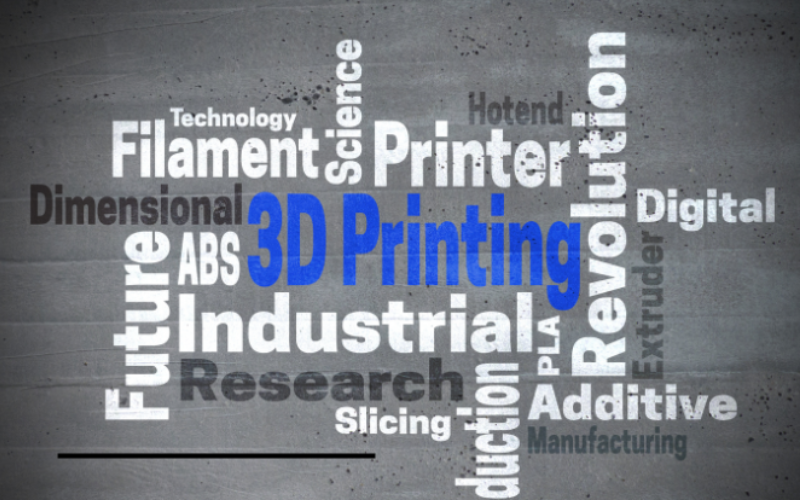3D printing, also known as additive manufacturing, has emerged as a revolutionary technology with profound implications across various industries, including defense and military sectors.
In Dubai, the utilization of 3D printing for manufacturing spare parts for military equipment represents a significant advancement in logistics, efficiency, and cost-effectiveness. This essay delves into the multifaceted aspects of how 3D printing is transforming the production of spare parts for military equipment in Dubai.
Understanding the Need
The maintenance and upkeep of military equipment demand a continuous supply of spare parts to ensure operational readiness. However, traditional manufacturing methods for producing these parts often encounter challenges such as long lead times, high costs, and supply chain vulnerabilities.
In Dubai, where the military plays a pivotal role in regional security, addressing these challenges is paramount to maintaining a robust defense infrastructure.
Advantages of 3D Printing
- Rapid Prototyping: One of the primary advantages of 3D printing is its capability for rapid prototyping. Traditional manufacturing processes often entail lengthy lead times for tooling and production setup. In contrast, 3D printing Dubai enables the rapid creation of prototypes directly from digital designs, significantly reducing the time required to iterate and refine spare part designs.
- On-Demand Production: 3D printing facilitates on-demand production, allowing military units in Dubai to manufacture spare parts as needed, eliminating the need for large inventories and minimizing the risk of supply chain disruptions. This agility ensures that critical equipment can be quickly restored to operational status, enhancing overall readiness.
- Complex Geometries: Many military equipment components feature intricate geometries that are challenging to produce using traditional manufacturing methods. 3D printing excels in fabricating complex shapes and structures with high precision, enabling the reproduction of intricate spare parts that may be impossible or cost-prohibitive to manufacture using conventional techniques.
- Customization and Adaptability: Each military unit may have unique requirements based on operational environments and mission objectives. 3D printing offers unparalleled customization capabilities, allowing spare parts to be tailored to specific needs and adapted to evolving circumstances. This flexibility enhances the versatility and effectiveness of military equipment deployed in Dubai.
- Reduced Costs: While the initial investment in 3D printing infrastructure and materials may be significant, the long-term cost savings can be substantial. By eliminating the need for tooling, reducing material waste, and streamlining production processes, 3D printing offers a cost-effective alternative to traditional manufacturing methods for producing spare parts.
Implementation Strategies
- Digital Inventory Management: Dubai’s military can leverage digital inventory management systems to catalog and store digital designs of spare parts, enabling quick retrieval and on-demand production whenever needed. This digital approach minimizes physical inventory requirements and ensures that spare parts can be reproduced efficiently.
- Collaboration with Industry Partners: Collaborating with local and international 3D printing companies and technology providers allows Dubai’s military to access cutting-edge expertise and resources. By partnering with industry leaders, military organizations can accelerate the adoption of 3D printing technologies and optimize production processes for manufacturing spare parts.
- Quality Assurance and Certification: Ensuring the quality and reliability of 3D-printed spare parts is essential for maintaining operational integrity. Dubai’s military can establish rigorous quality assurance protocols and certification standards to validate the performance and durability of 3D-printed components, thereby instilling confidence in their suitability for military applications.
- Training and Skill Development: Equipping military personnel with the necessary skills and knowledge to operate 3D printing equipment and software is critical for successful implementation. Training programs and workshops can be conducted to familiarize personnel with the principles of additive manufacturing and empower them to utilize 3D printing technologies effectively.
- Research and Development Initiatives: Investing in research and development initiatives focused on advancing 3D printing materials, processes, and techniques tailored to military applications can drive innovation and enhance the capabilities of Dubai’s defense infrastructure. By collaborating with academic institutions and research organizations, Dubai’s military can stay at the forefront of technological advancements in additive manufacturing.
Case Studies and Success Stories
- UAE Armed Forces: The UAE Armed Forces have embraced 3D printing for manufacturing spare parts, leading to improvements in operational efficiency and cost savings. By leveraging 3D printing technologies, the UAE Armed Forces have reduced lead times for spare part production and enhanced their ability to respond to evolving operational requirements.
- Dubai Police: The Dubai Police Force has implemented 3D printing for producing spare parts for vehicles and equipment used in law enforcement operations. This initiative has enabled the Dubai Police to maintain their fleet of vehicles and equipment cost-effectively, ensuring optimal performance and reliability.
- Dubai Aerospace Industries: Dubai Aerospace Industries (DAI) has integrated 3D printing into its maintenance, repair, and overhaul (MRO) operations, allowing for the rapid production of spare parts for aircraft components. By embracing additive manufacturing, DAI has enhanced its MRO capabilities and minimized aircraft downtime, leading to improved operational efficiency.
Challenges and Future Outlook
While the adoption of 3D printing for manufacturing spare parts offers numerous benefits, several challenges must be addressed to realize its full potential in Dubai’s defense and military sector. These challenges include ensuring cybersecurity, standardizing certification processes, optimizing material properties, and overcoming cultural and organizational barriers to adoption.
Looking ahead, continued investment in research and development, collaboration with industry partners, and ongoing training and skill development initiatives will be essential for advancing the use of 3D printing in Dubai’s defense and military sector.
By harnessing the transformative power of additive manufacturing, Dubai can strengthen its defense infrastructure, enhance operational readiness, and ensure the security and resilience of its military forces.
Conclusion
In conclusion, the utilization of 3D printing for manufacturing spare parts represents a paradigm shift in Dubai’s defense and military sector, offering unprecedented opportunities for agility, efficiency, and innovation.
By embracing additive manufacturing technologies and implementing robust strategies for implementation, Dubai can overcome traditional manufacturing constraints, enhance operational capabilities, and maintain a competitive edge in the rapidly evolving landscape of modern warfare.




